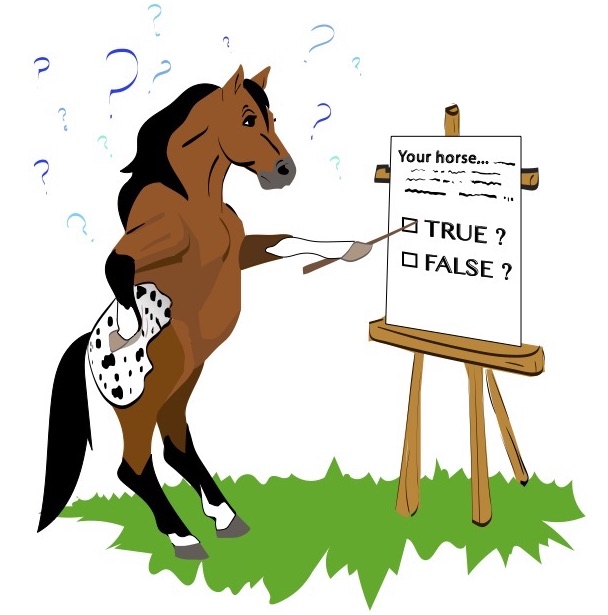
1. As an animal of prey, your horse’s motto is:
A) “First think, then react.”
B) “First react, then think.”
C) “First stop, then run.”
[RELATED: ‘Yep…my horse spooked at *that*.’]
2. Why is a simple plastic bag an especially good desensitizing tool to use with your horse?
A) It’s something he’s familiar with.
B) It makes him think of treats.
C) It’s a “triple threat” to him.
3. A large, air-filled training ball can be a great de-spooking tool because although it will startle a horse at first, it also activates…
A) his relaxation response.
B) his natural curiosity.
C) his herd mentality.
4. True or false: Desensitizing your spooky horse to as many stimuli as possible works in part because, as you do the desensitizing, you’re spending less time in the saddle.
T / F
Try this training halter!
Products we feature have been selected by our editorial staff. If you make a purchase using the links included, we may earn a commission. For more information click here.
HOW’D YOU DO? (Answers below.)
1. B is correct. As a prey species, horses evolved to stay alive by staying alert and instantly ready to scoot to safety. Their natural tendency is to react first and think later. Knowing this helps you realize where a horse is “coming from” with respect to his spookiness; this understanding, in turn, can help you figure out how best to help him overcome it.
2. C is correct. A plastic bag is a triple threat because it’s an unknown object that moves and makes noise—all factors that can spook a horse. Tie a ripped-open bag to the end of a training stick and you have what clinician Clinton Anderson calls “an especially good desensitizing tool.” Your goal is to be able to rub the “super scary” bag all over your horse’s body, using the stick to scratch him in his favorite spots.
[Learn Warwick Schiller’s new take on desensitizing a horse.]
3. B is correct. The ball’s size, shape, and rolling action will alarm a horse at first, but they also activate his natural curiosity, which works in your favor, says clinician Tommy Garland. Once your horse learns the ball won’t hurt him and he can make it roll by bending a knee, he begins to enjoy rolling it—then following after it and making it move again.
4. F is correct. What helps to make desensitizing so effective is the extra time overall you’re spending with your horse as you’re doing it. This builds the bonds of trust and communication between the two of you, and more trust leads to less fear.
[MORE TIPS: Three experts, three ways to de-spook your horse.]
Hey! Not already receiving H&R’s fun and informative newsletter? Sign up right now for The Ride. It’s free!






